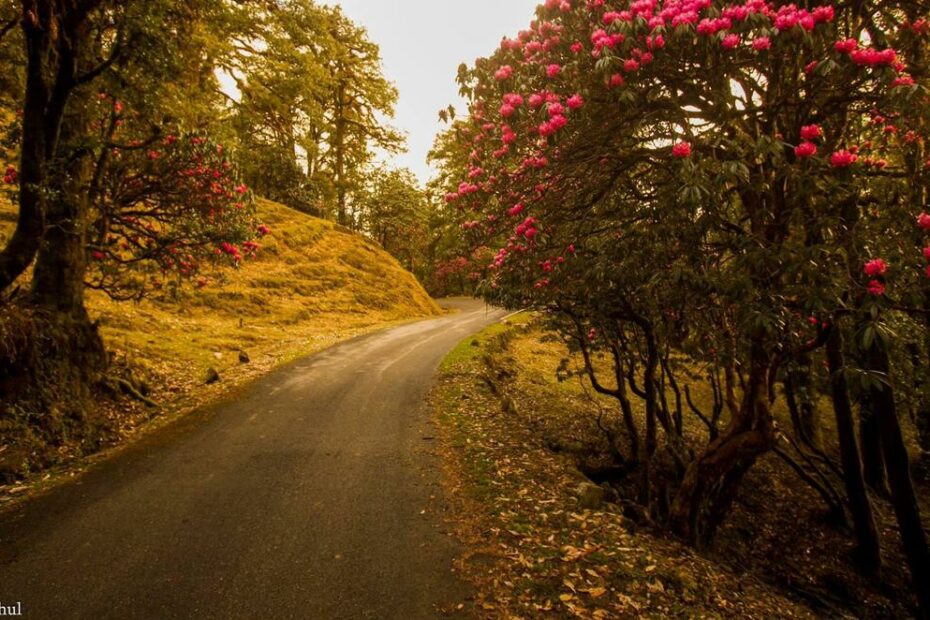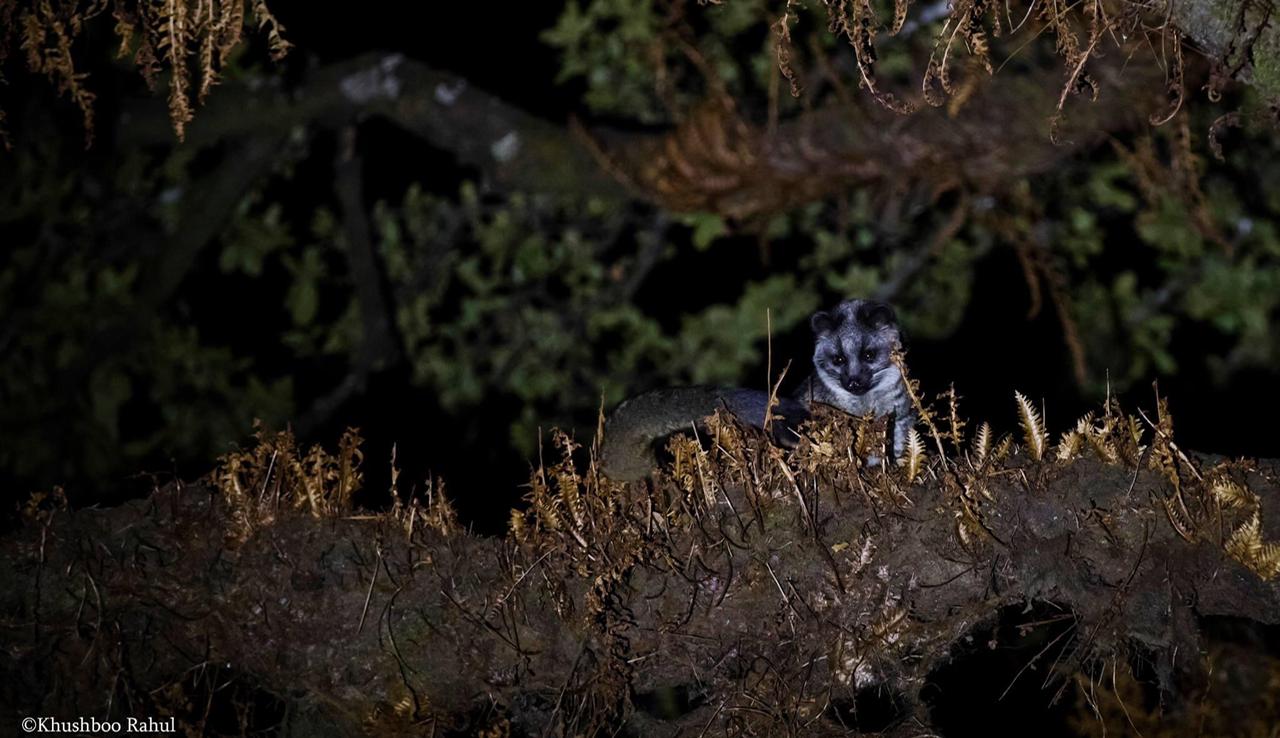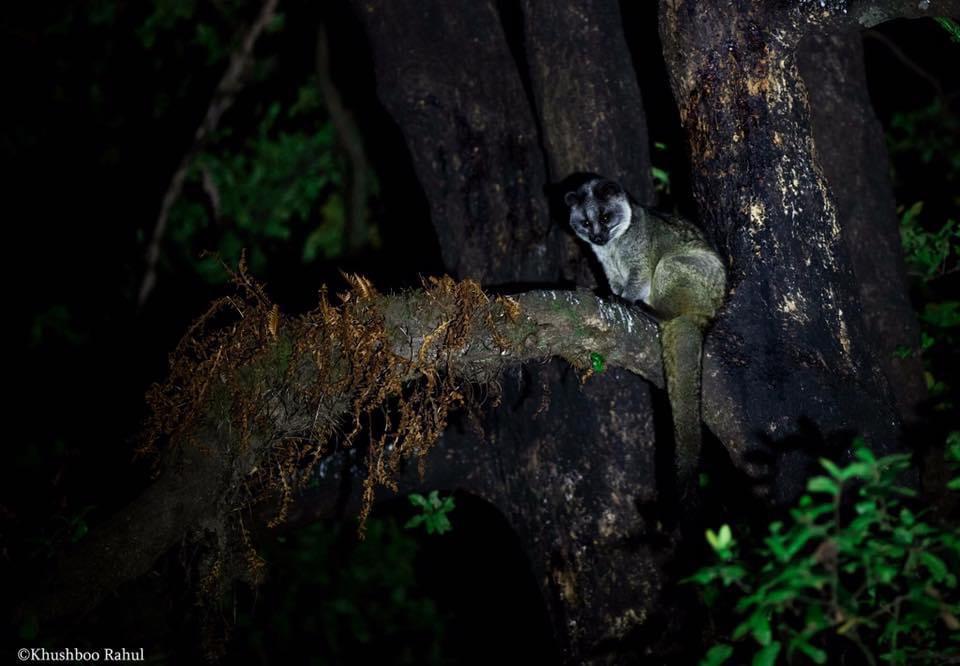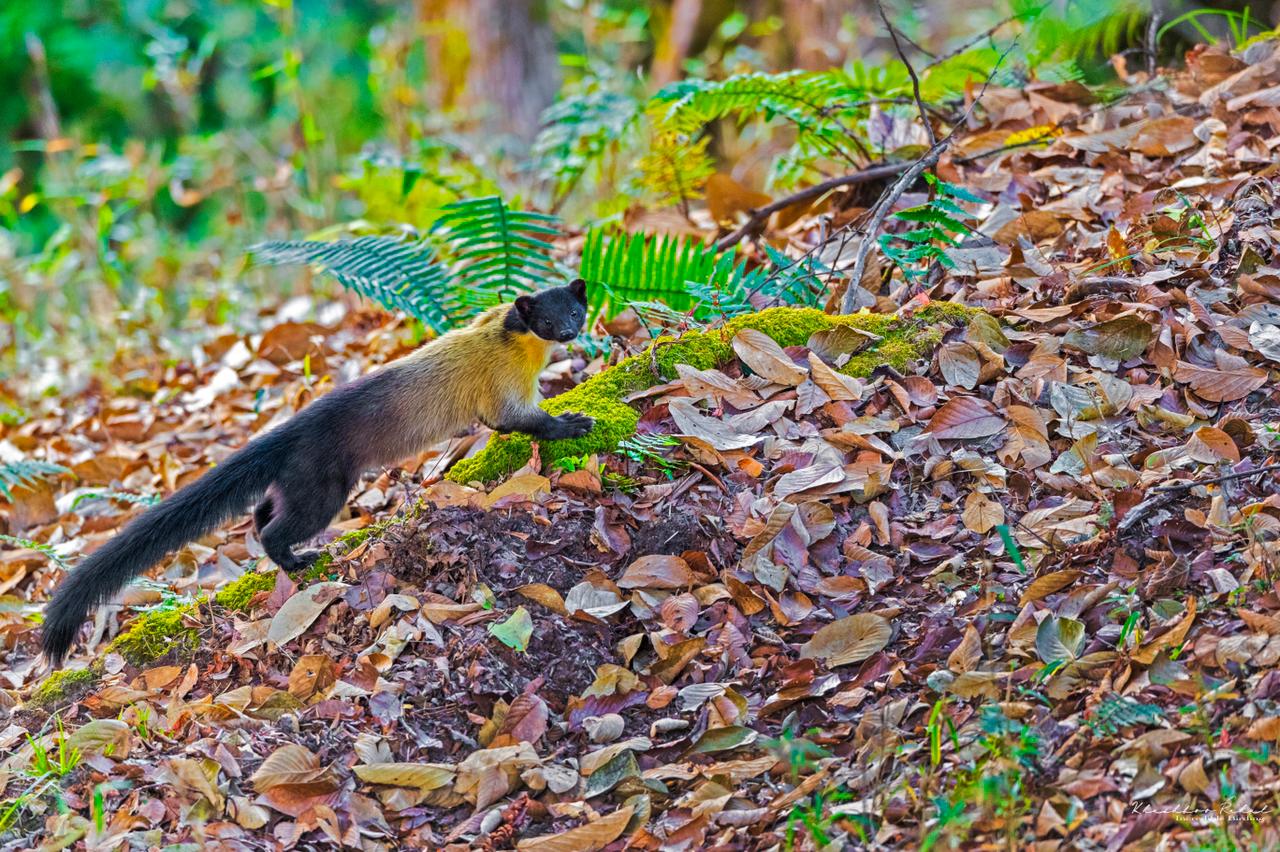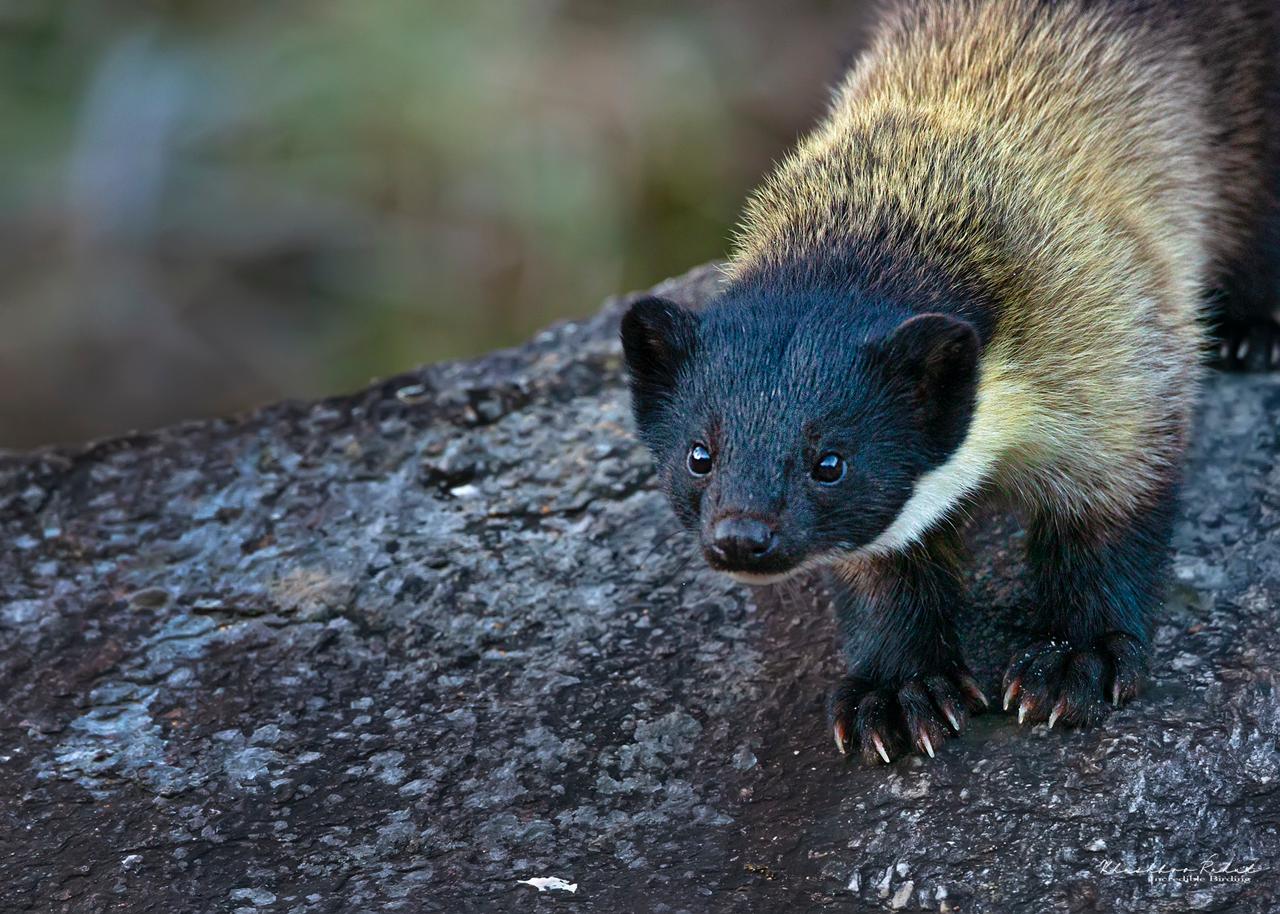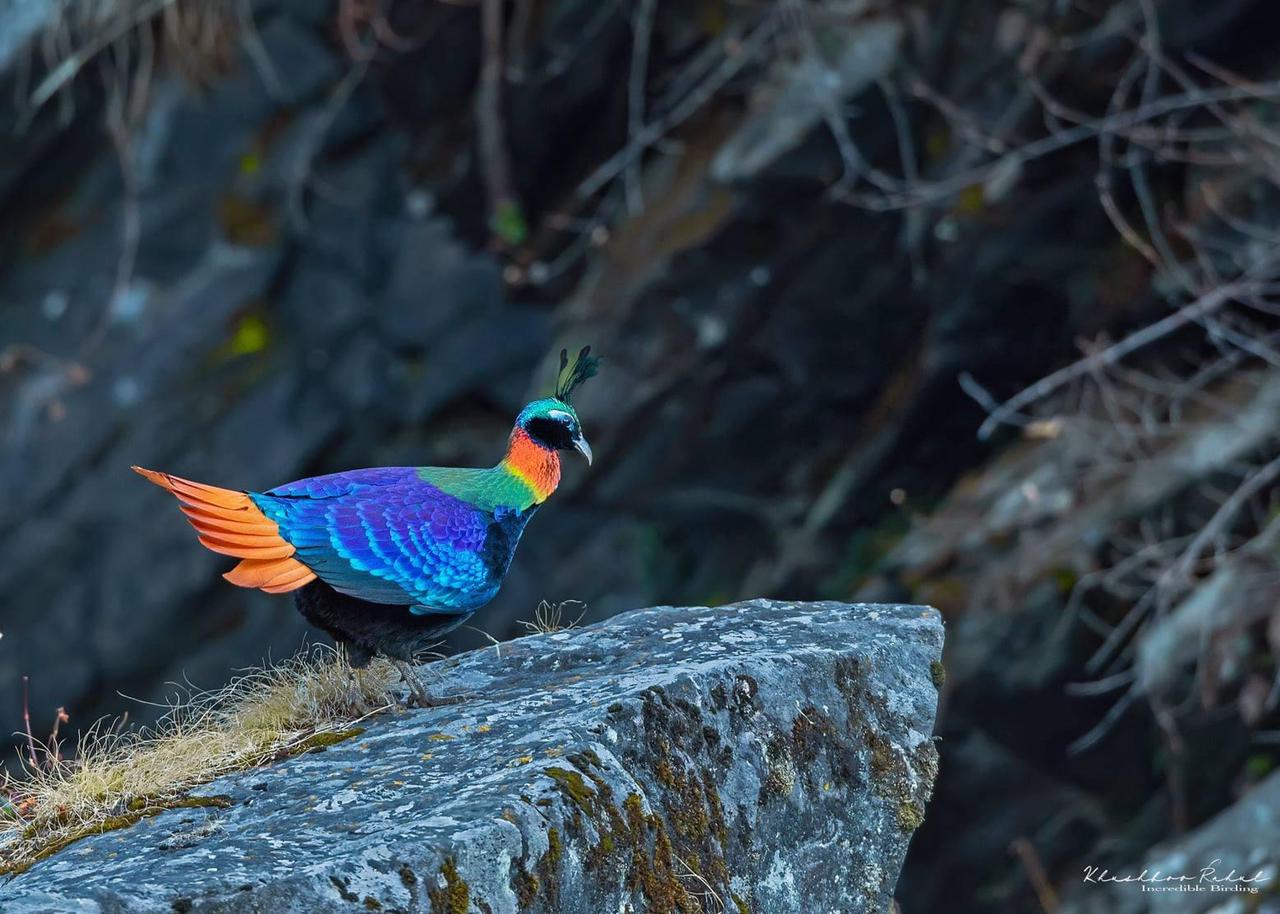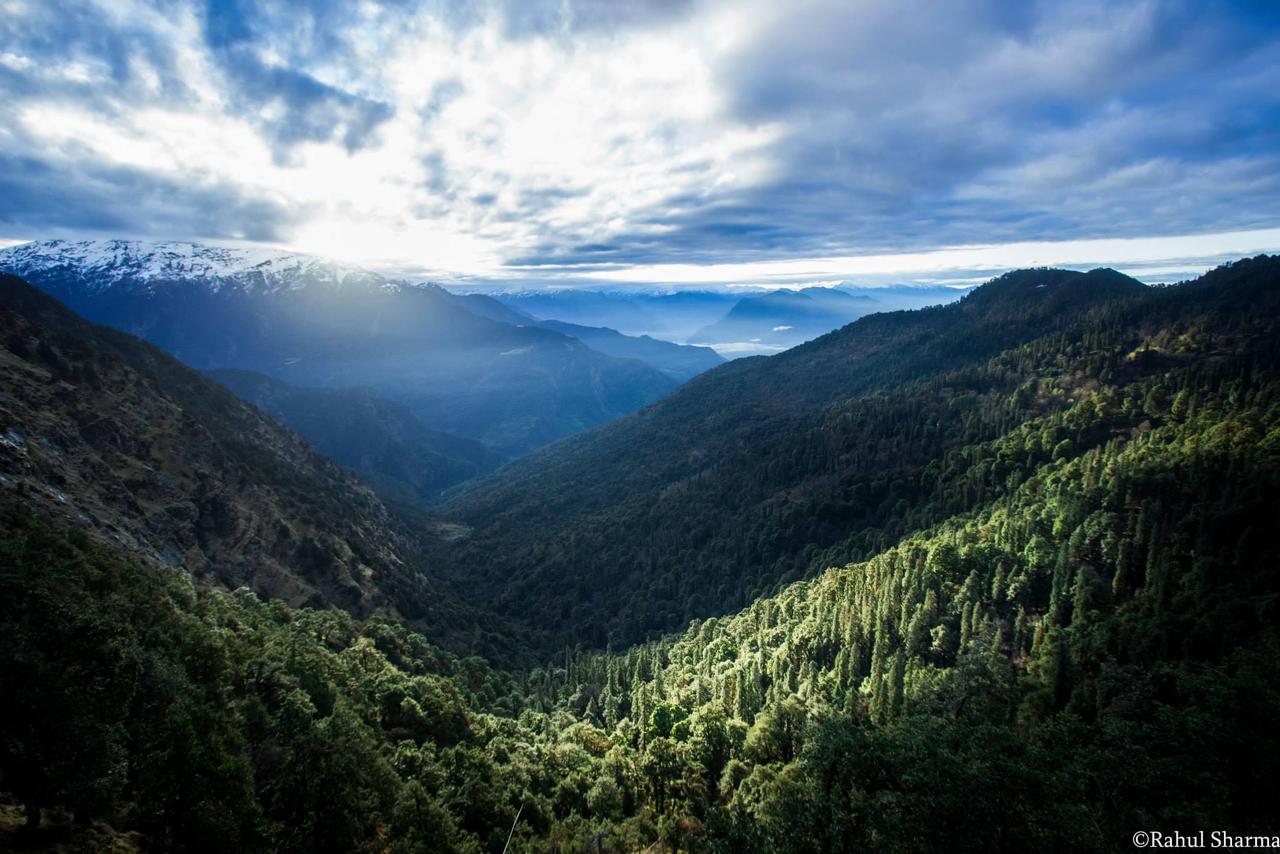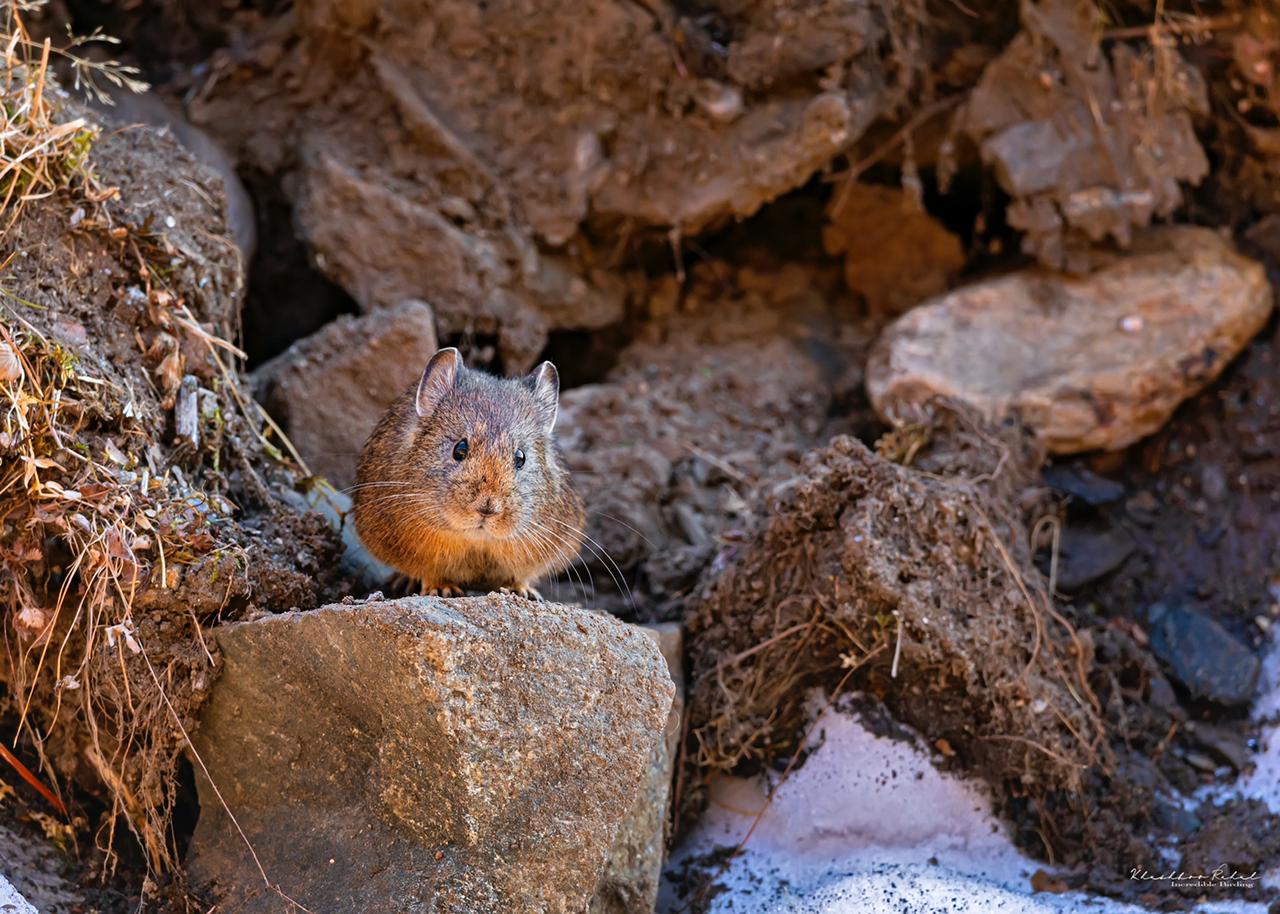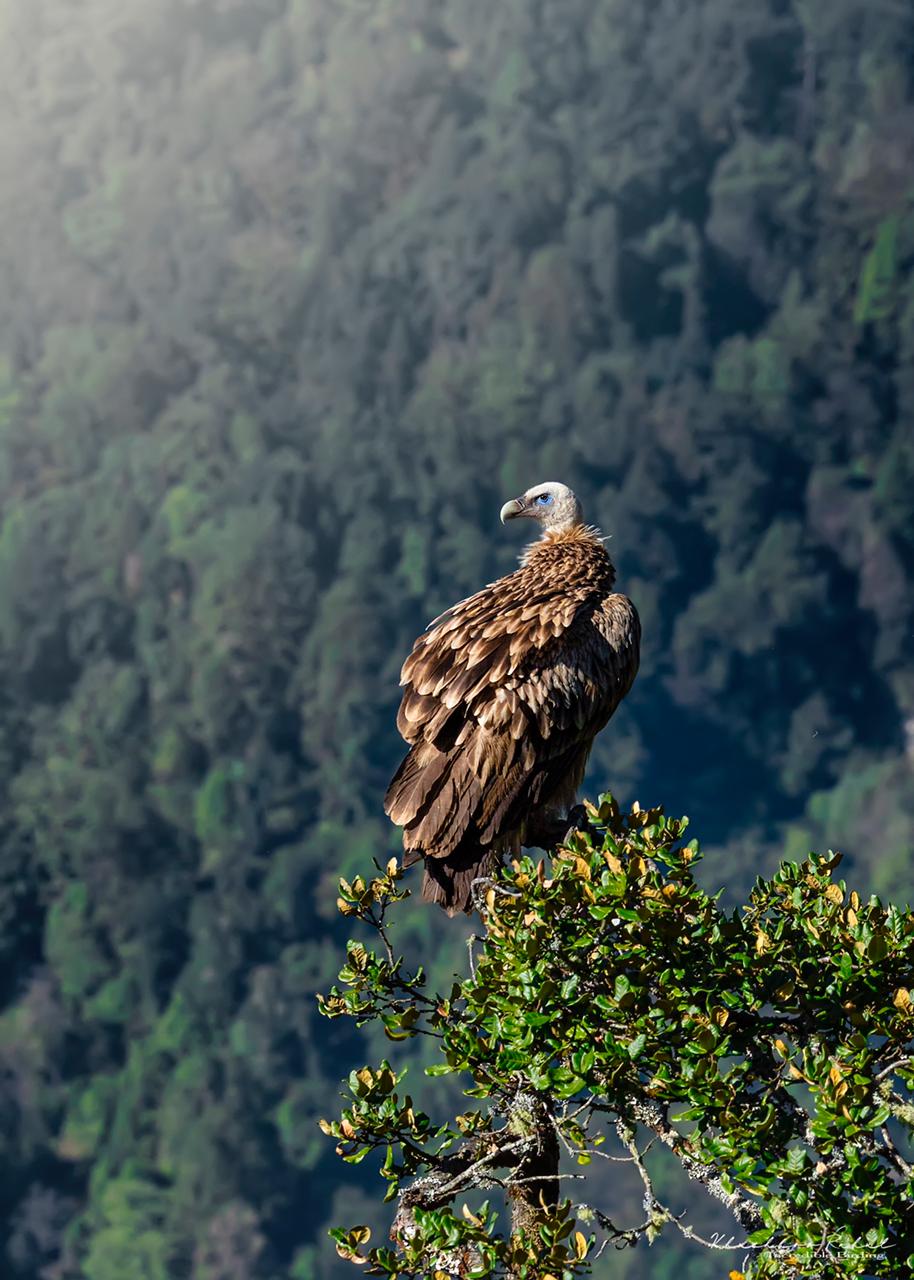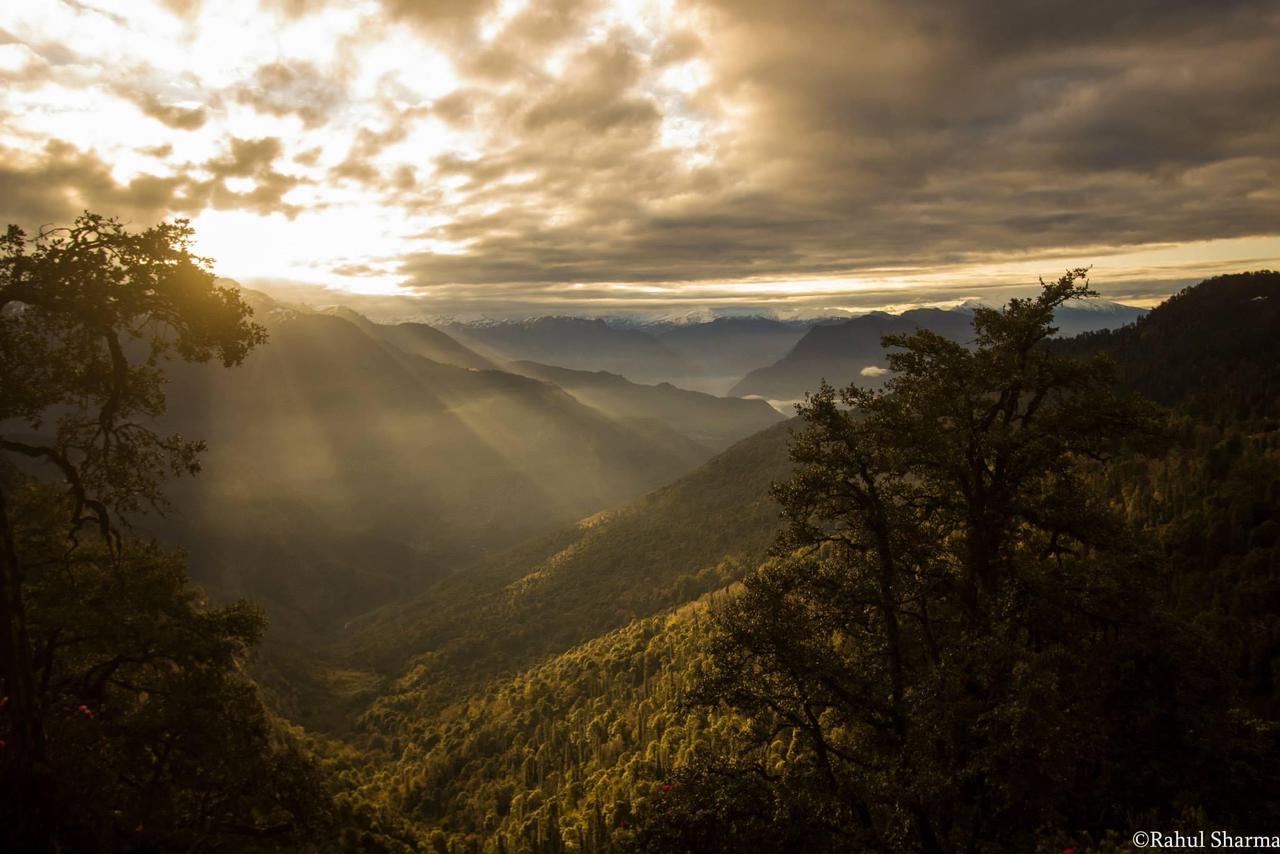
The Kedarnath Valley is situated in Uttarakhand is a beautiful mosaic of snow-clad, rocky mountains, rolling alpine meadows and dense forest cover. This region is also known as the Kedarnath Wildlife Sanctuary which actually, is the largest conservation area in the western parts of Himalayas. Covered with temperate forests along with some subalpine and alpine forestation in the high altitude regions, the valley is home to several species of flora and fauna.
During a nocturnal wildlife photography expedition in the valley, we came upon various birds and mammals that were out and about in the dark. As we were making our way through the dark forest, we reached an area where the forest opened up into beautiful meadows. Right there stood a behemoth of an oak that was bustling with life. We could see the sticky sap ooze from its branches and it had attracted some birds and mammals. A forest with oak trees is a rich ecosystem that is an apt habitat for numerous small, medium, and large animals. So, we decided to stick out the night by the tree and wait patiently for the nocturnal wildlife to become active. Gradually, different species of mammals, birds, reptiles, and other fauna began moving on and around the tree. Our patience paid off as we got the wonderful opportunity to photograph some spectacular animals in their natural habitat. Read on to get a glimpse of the animals we spotted (and photographed) in the darkness of the night!

Himalayan Palm Civet
Alternatively known as the Masked Palm Civet and scientifically as Paguma larvata is a furry little mammal that roams the wilderness of the Kedarnath Wildlife Sanctuary. Its physical attributes include a white stripe of fur on its face from the nose up the forehead, dark eyes, and a thick long tail that is covered with gray fur. The Himalayan palm civet is closely related to a mongoose.
Length of the body: 20 to 30 inches (without tail)
Length of the tail: 20 to 25 inches
Weight: 3.6 to 5 kg
Similar to a skunk, a civet is able to protect itself by spraying a stinky scent on predators. It is believed that the white mask-like design on the face of this mammal signals caution to its predators. Being arboreal mammals, Masked palm civets can climb up trees rapidly and spend the majority of their time up in the trees of tropical forests and grasslands. Although they are solitary beings and try to remain out of sight, they can be aggressive if threatened. The Himalayan palm civet is an omnivorous animal that feeds on fruits, leaves, frogs, rodents, insects, and sometimes, small birds.
Yellow-throated Marten
This tenacious and smart hunter belongs to the Mustelidae family and is scientifically called Martes flavigula. It has a black face, a greyish-black furry tail, and a spectacular golden-yellow coat on its neck, throat, belly and back. The Yellow-throated marten is a carnivorous mammal that has resemblance with other small carnivores like badgers, otters, and weasels as they are closely related. It prefers a cushy habitat in tropical and subtropical forests, montane forests, and alpine meadows. This makes the Kedarnath Valley the perfect place for them to thrive.
Body length: 22 to 24 inches (excluding the tail)
Tail length: 14 to 17 inches
Weight: 1.2 to 5.7 kg
The Yellow-throated Marten is a brave, excellent hunter often taking on prey much larger than itself and succeeding at it too! Fascinatingly, an adult marten actually doesn’t have any known natural predators; that’s how good they are at hunting and staying safe. A peculiar aspect of the mammal is that along with hunting birds, reptiles, and small mammals, they are quite fond of honeybees. Seems like they were inspired by Winnie the Pooh!
Himalayan Red Fox
A resilient hunter, the Himalayan Red Fox or Vulpes vulpes – as it is called scientifically – is considered to be the most common terrestrial carnivore in the world. Barring Antarctica, this furry hunter is found on every other continent on the planet! The Himalayan Red Fox likes a challenge and hence loves to inhabit the snowy Himalayas of North India living between altitudes of 2100 meters and 5000 meters. The reason behind the abundance of this species all over the Earth is its ingenuity in adapting to the harshest of habitats.
Size: The males are 23 to 35 inches while the females are 17 to 23 inches, both excluding the tail.
Length of the tail: 14 to 17 inches in males and 11 to 18 inches in females
Weight: An adult male weighs anywhere between 4-14 kg while its female counterpart weighs around 3-7 kg.
The Red Fox has exceptional hearing as well as a sharp sense of smell. During winter, it uses these heightened senses to listen for the rustle of burrowing creatures like voles and pikas. When the fox senses a prey burrowed in the thick snow, it follows the sound, and at the right moment pounces into the snow to capture the prey.
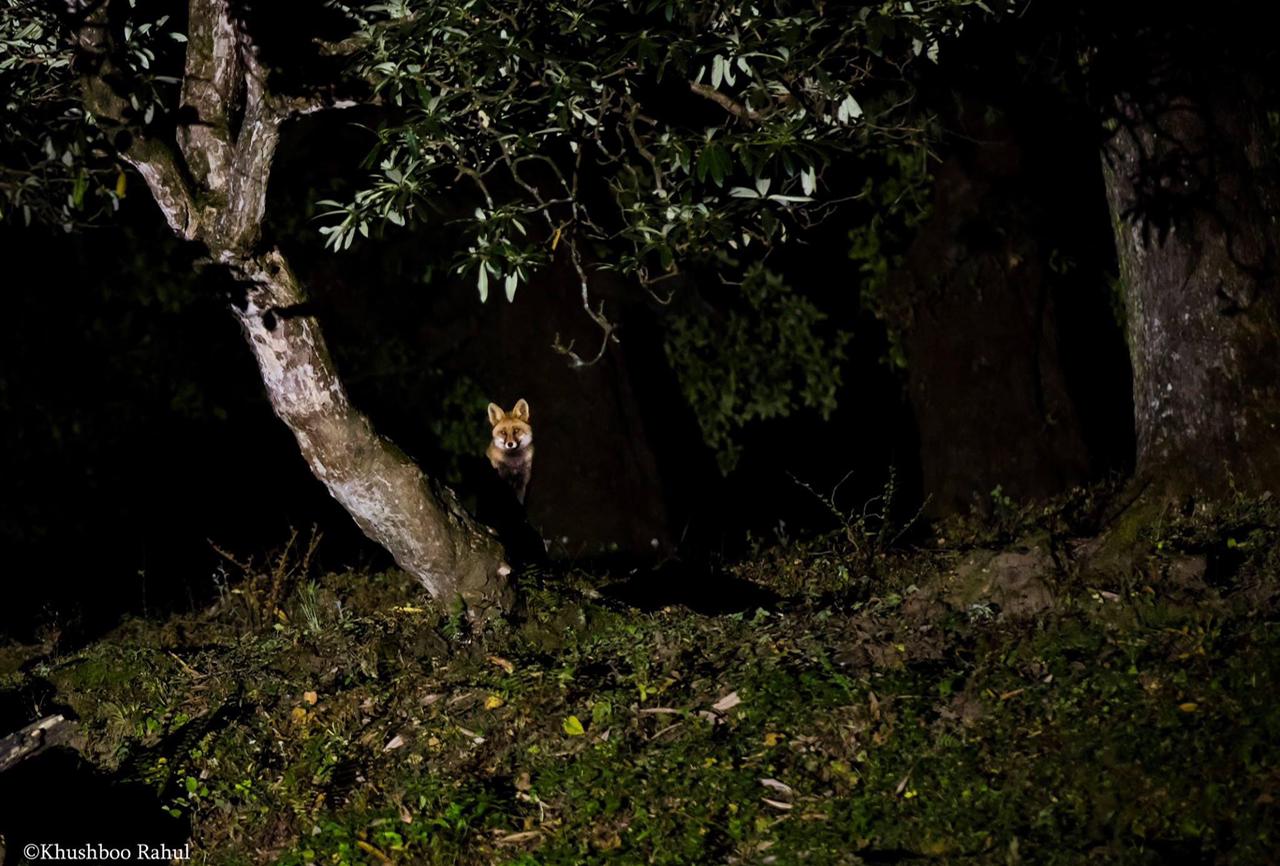
Grey-headed Flying Squirrel
This furry little rodent from the Sciuridae family is a subspecies of the Spotted Giant Flying Squirrel (Petaurista elegans). Found in the hills and mountain forests of Uttarakhand and Arunachal Pradesh in India, the Grey-headed Flying Squirrel, scientifically referred to as Petaurista elegans caniceps, is an arboreal and nocturnal mammal. It has orangish-brown or reddish-brown underparts, a white throat, black tail-tip, a fully grey head, and a grey-brown back. They are a noisy bunch often seen gliding large distances using the patagium (membrane) between their limbs.
Body length: 11.5 to 15.5 inches (without the tail)
Tail length: 13.5 to 16 inches
Weight: 0.7 to 1.6 kg
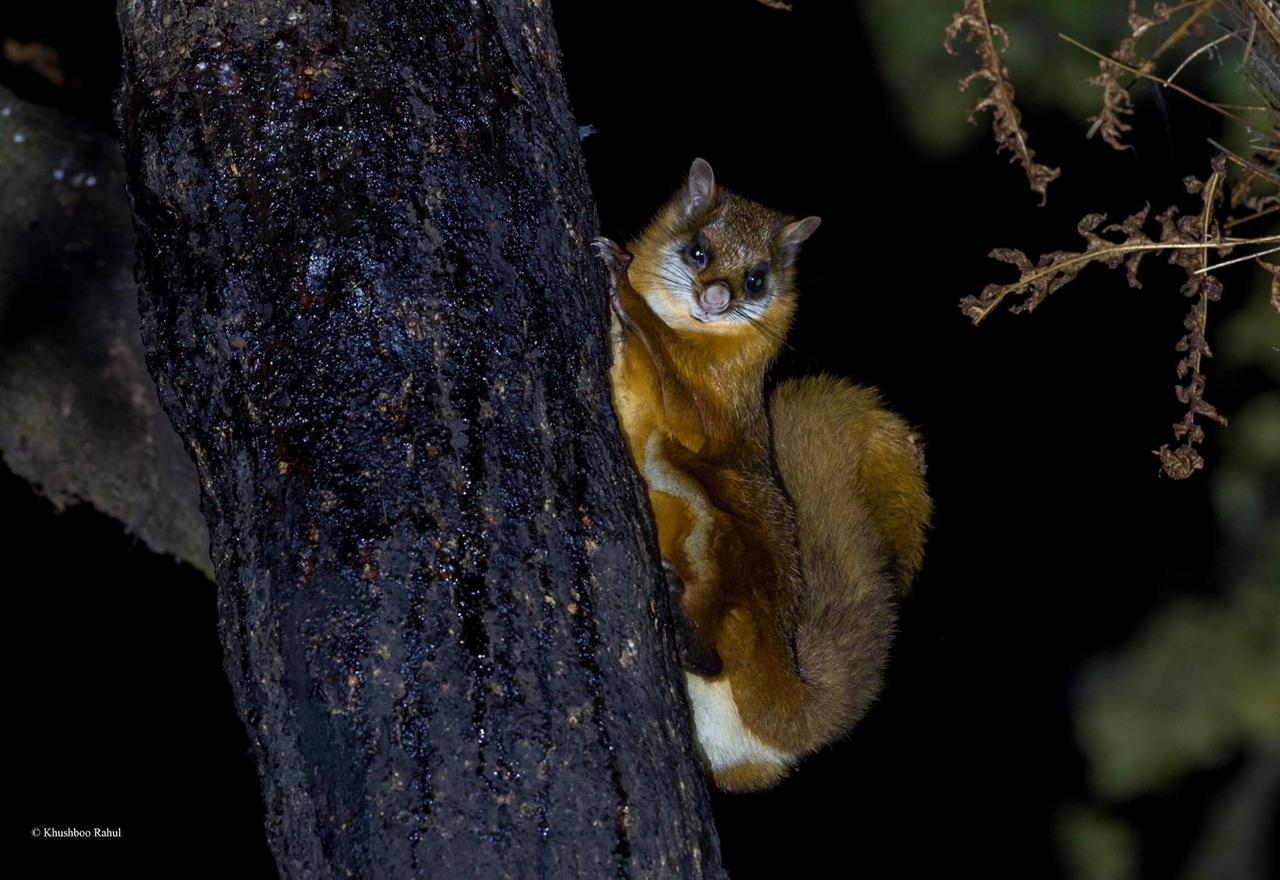
Mountain Scops Owl
This master of camouflage called Otus spilocephalus is a smaller morph of the scops owl. It has bristly feathers, short ear-tufts, short & blunt wings, and piercing golden-yellow or greenish-yellow eyes. This nocturnal bird is usually active after dusk, until then, it blends itself into tree cavities, dark tree hollows, and even the barks of trees. It prefers to live and forage in dense evergreen forests of pine, chestnut and oak, just like those in the Kedarnath Valley. The Mountain Scops Owl lives at altitudes between 600 meter and 2600 meters, usually preferring to inhabit regions above 1200 meters.
Size: 7 to 8 inches tall without the tail
Wingspan: 10 to 15 inches
Tail length: 2.5 to 3.5 inches
Weight: 0.05 to 0.12 kg
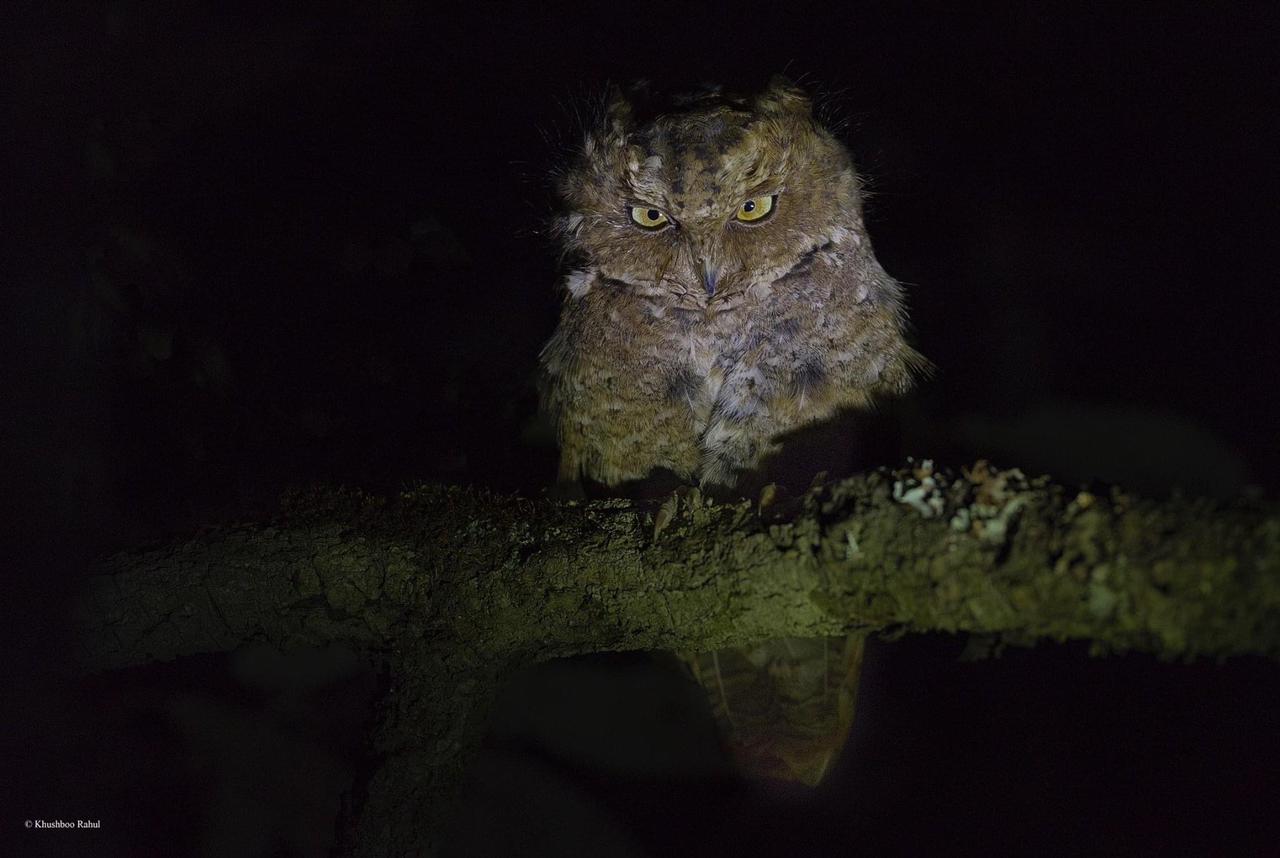
These five species of nocturnal mammals and birds are a mere glimpse of the absolute serenity that the Kedarnath Valley has to offer. We have had the privilege of observing these wonderful creatures in their natural habitat and photographing them too. So, how eager are you to explore this bespoke valley and experience the wonders of nature here?


